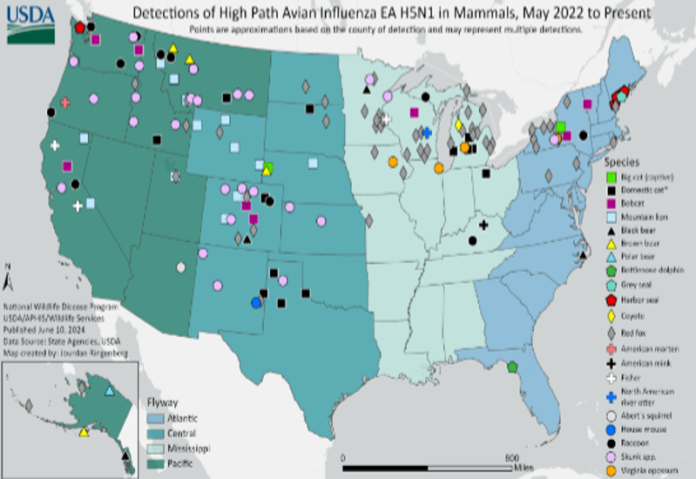The Highly Pathogenic H5N1 Bird Flu Has Been Detected In 50 Species Of Wild Mammals Across The Globe
Monday, June 17, 2024, 9:00 A.M. ET. By Ryan Metz: Englebrook Independent News,
MANHATTAN, NY.- As a follow-up to my recent publications, the Highly Pathogenic H5N1 bird flu has now been detected in nearly 50 species of wild mammals in 26 countries since 2020. Of these species, 21 have occurred in the United States ranging in size and location from house mice in New Mexico to Polar bears in Alaska.
Over 300 cases have now been recorded by the USDA since May of 2022. The range in species and locations indicates that this flu virus is highly adaptable in mammals and may become more likely to cause infections in humans.
“This discovery is concerning because it suggests a broader susceptibility of mammals to the H5N1 virus,” stated Dr. Amanda Lee, a virologist at the Institute of Animal Health. “While transmission between mammals is rare, it poses significant risks due to the potential for mutation and adaption.”
Some animals such as sea lions and elephant seals do seem to be spreading the virus among themselves. In Argentina last year, 17,000 elephant seals died from infection along with 96% of the pups born last year. Other marine mammals including dolphins, porpoises, and others have also been dying in their thousands from H5N1 along the Pacific coast in South America.
So far, there have only been 3 human cases in the United States in this time, with two coming from contact with infected dairy cattle, and one case from poultry farming. An Australian child was hospitalized with a severe infection after contracting bird flu in India. This was the most severe infection in a human in recent years, with most people having very mild symptoms. No details have been made available on the general health of the child prior to infection, which may have played a role in the severity of the symptoms. Australian officials have since reported that the child has made a full recovery.


